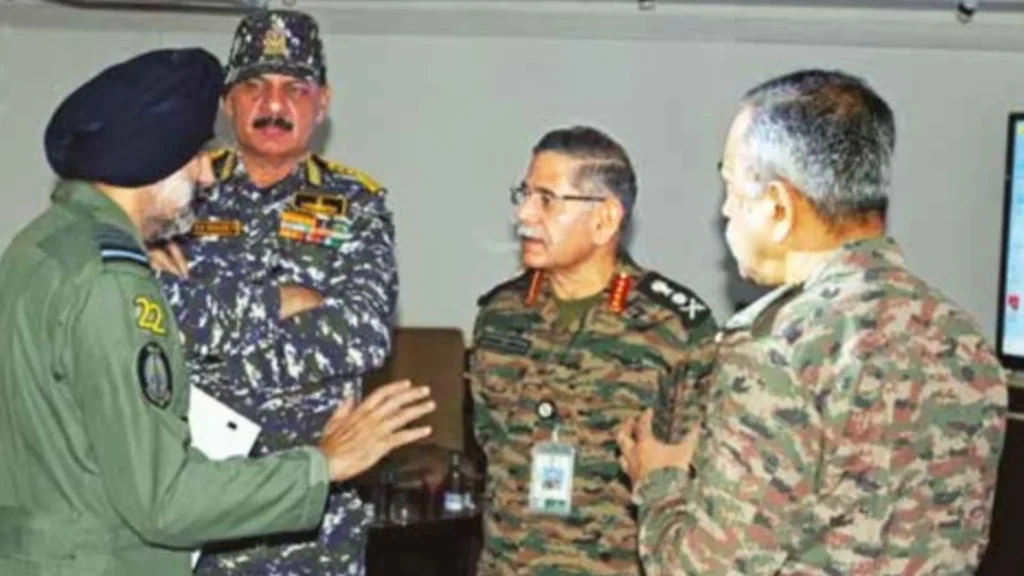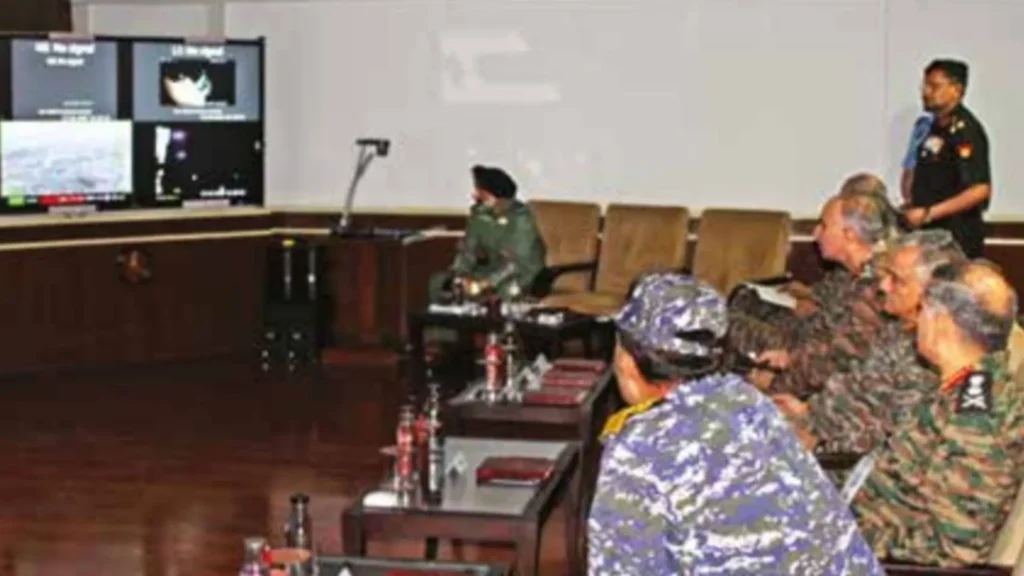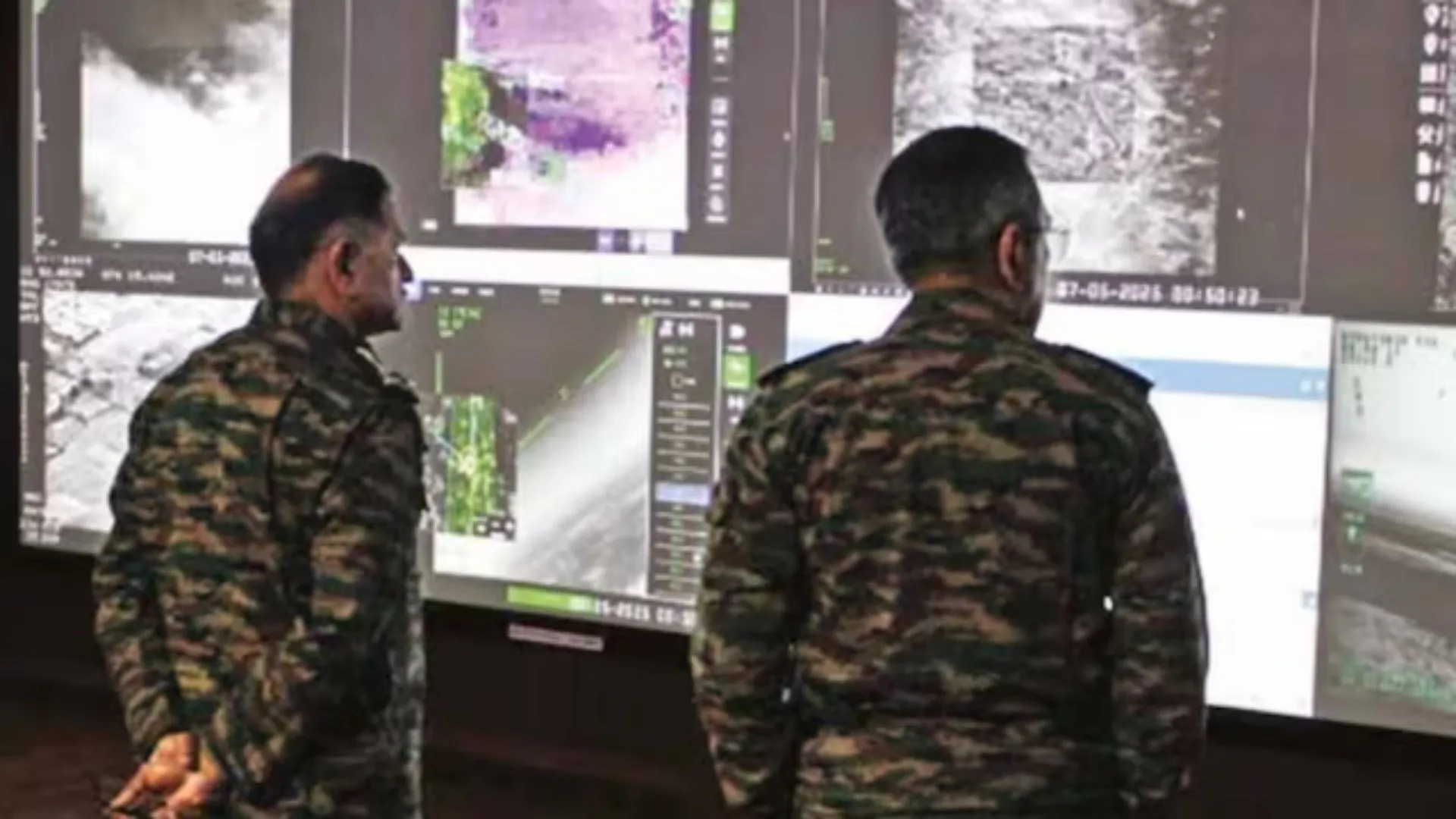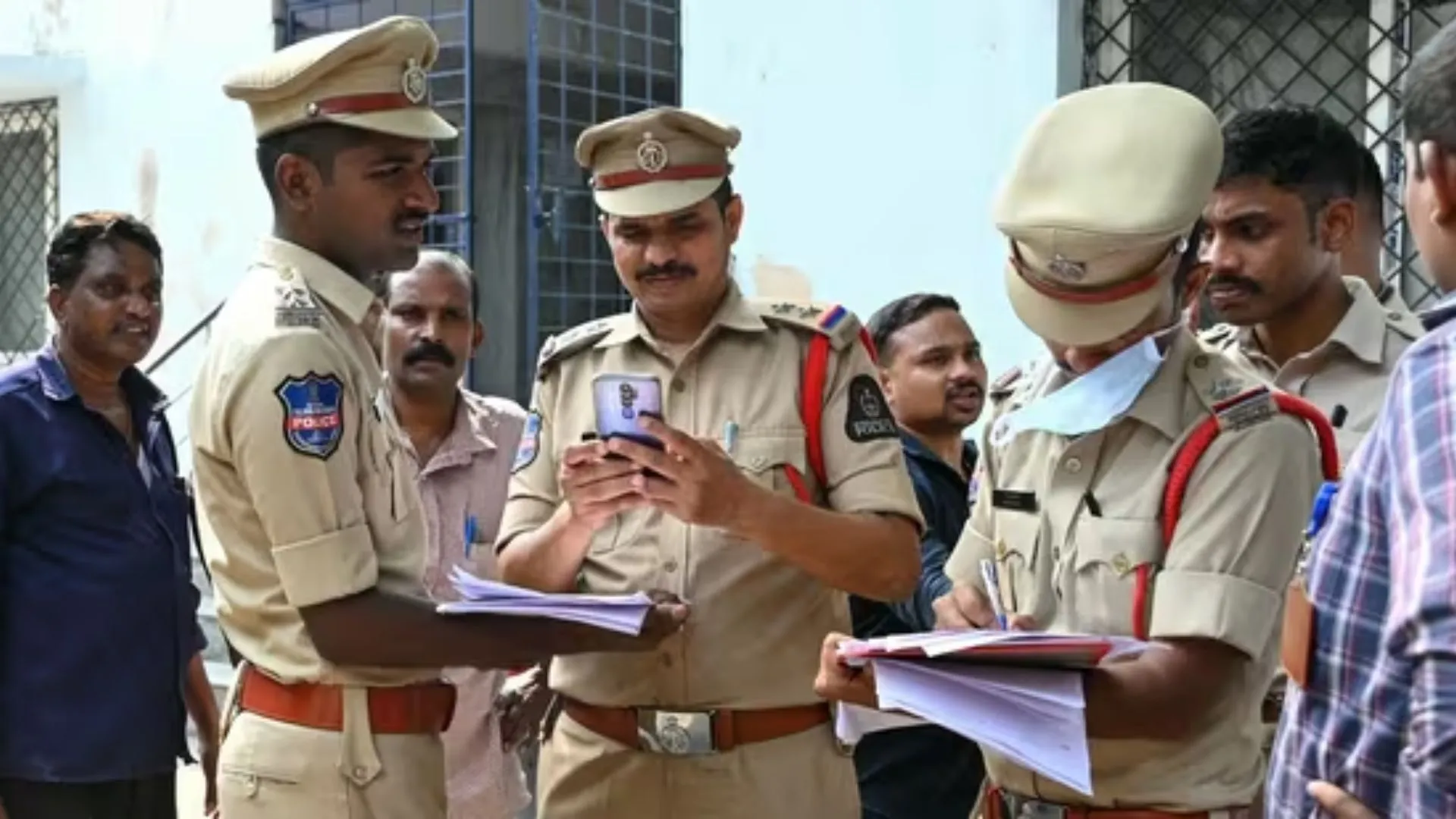The initial photos coming out of the headquarters of ‘Operation Sindoor’—India’s major counter-terror operation—reveal Army Chief General Upendra Dwivedi, Air Chief Marshal AP Singh, and Navy Chief Admiral Dinesh K Tripathi intently focused as they guide the operation. The war room images obtained by CNN-News18 were taken at 1:05 am on May 7, giving a glimpse into the strategic command structure during high-stakes operations.
Take a look at some photos straight from the war room:

The chiefs of the Tri-Services captured leading ‘Operation Sindoor’ from the war room ImageIndian Army

The chiefs of the Tri-Services captured leading ‘Operation Sindoor’ from the war room ImageIndian Army
Strikes in Retaliation to Pahalgam Attack
India launched ‘Operation Sindoor’ on the night of May 6–7, as a retaliation for the April 22 terror attack in Pahalgam that took the lives of 26 people. Upon verifying credible cross-border involvement, the Indian forces conducted targeted and focused strikes against nine terrorist camps located in Pakistan and Pakistan-occupied Kashmir (PoK).
The operation reportedly eliminated over 100 terrorists and was executed without any civilian casualties. “Considering operational ethics and restraint, the mission was carried out with strict self-imposed limits to prevent collateral damage, ensuring that only terrorist targets were neutralised while avoiding harm to civilians,” the Indian Army said.
Terror Camps Destroyed Across PoK
The specific terror camps belonged to outlawed organisations such as Lashkar-e-Taiba (LeT), Jaish-e-Mohammad (JeM), and Hizbul Mujahideen. Some of the key installations targeted were the Gulpur and Abbas camps in Kotli district, and the Barnala camp in Bhimber.
Gulpur camp, which was one of the biggest centers for LeT handlers in Rajouri and Poonch regions of Jammu and Kashmir, was the hub of planning and logistics. Abbas camp was used for the indoctrination of suicide bombers with LeT. Barnala facility was notorious for indoctrinating militants in jungle warfare, IED manufacturing, and weapons handling.
High-Precision Intelligence and Planning
The success of the attacks relied on massive intelligence coordination. According to the Indian Army, a “meticulous analysis of the terror geography” helped determine camps and training centers. This detailed planning enabled the military to strike hard and record zero collateral damage.
India reasserted its policy of firm revenge against terrorism with this attack, especially following attacks with proven cross-border origins.



















